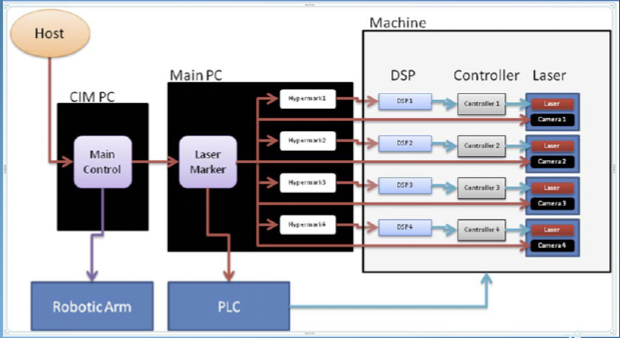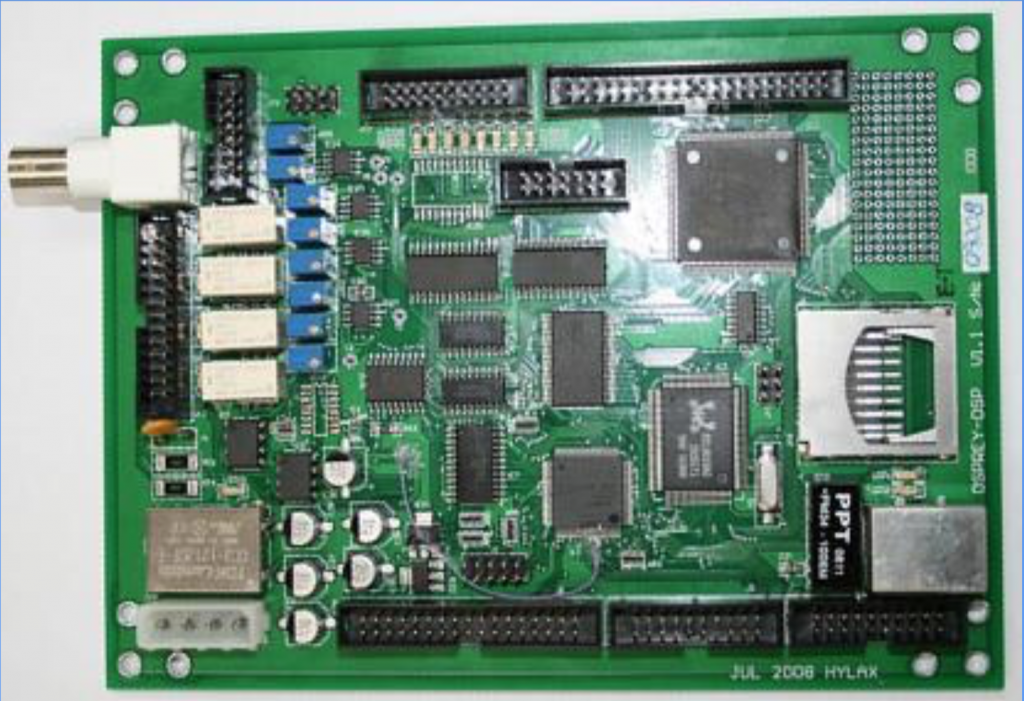The most common method of controlling a laser system with scan head is by using a Windows PC with dedicated embedded cards slotted in the PC for galvos actuation, I/Os, analog signals interfaces and serial/parallel communications. Hylax has developed embedded DSP based processor boards which is able to handle the whole laser marking process including firing the laser, actuating the galvos in the scanhead and controlling interfaces with other modules to integrate the whole operation.
The first generation was using the TI chip and second generation using the Analog Device chip. DSP embedded boards have adequate processing power to handle the real-time high speed control required for scanhead systems. We use our own embedded software algorithm to obtain the fastest response time and performance without using 3rd party OS. The boards communicate with the PC via wired ethernet.
Linking a number of this DSP boards together enable multiple scan head laser modules to work together, for example to process a whole piece of glass panel or marking an entire lead frame. We have implementation of up to 9 laser heads each with it’s own DSP board connected together to a single master PC. The boards do the laser processing and submodules control while the PC does the high level mark contents generation, global positions mapping, communication with CIM, recipe setup, operator GUI and others. For scanvision implementation, the PC also handles the vision capture and image processing computation using GigE cameras.
Multiple cores in the PC are able to handle image processing computation for a number of cameras concurrently and other methods have been developed to hide camera processes from interfering with laser processing time so as to reduce tact time of whole operation.
With multiple DSP boards there is a need for a synchronisation mechanism to ensure the scanheads all operate simultaneously. This is achieved by hardware communication between boards and handled by the embedded software in the board itself.
This architecture also reduces the need for multiple licences for special code pattern generation software like Vericode which is expensive. The main PC controller using only one licence generates the mark patterns for all the DSP boards instead of requiring a licence for each laser marker.
The boards are small and compact and they can be easily housed in the machine and requires minimal electrical power. As a result the whole machine size can be made smaller and wiring reduced. Also the DSP controllers can be situated near the laser heads to reduce noise interference and just requiring an ethernet cable to connect with the master PC.
Customised programs can be developed for special applications to gain improved performance and reduce hardware requirements with optimisation of computing resources and tasks division and allocation. This would make the machine more reliable and flexible to enhanced in the future.


See also quad head laser marker and large panel glass equipment


